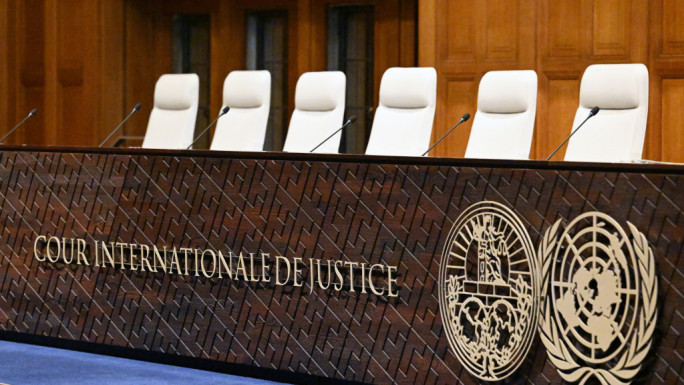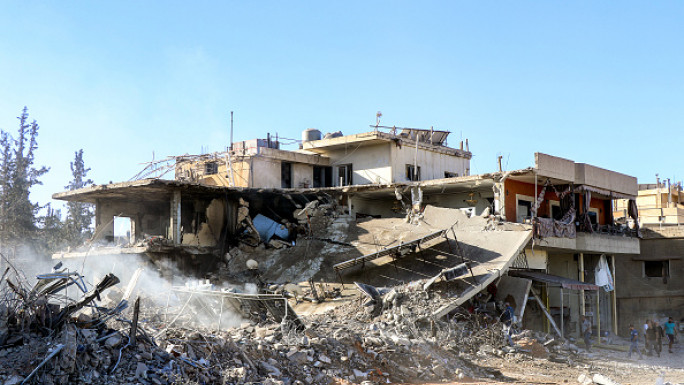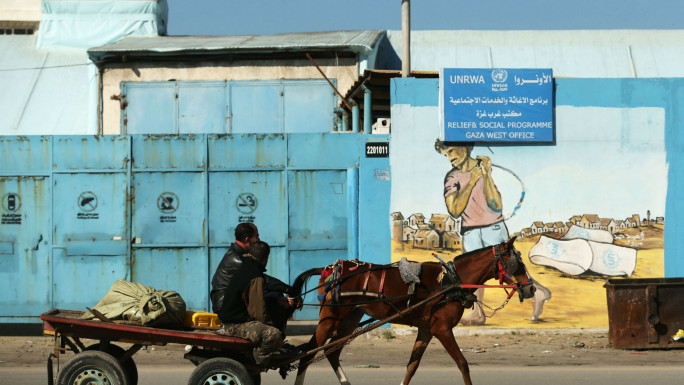
Why do Yemen's ceasefires keep failing?
Why do Yemen's ceasefires keep failing?
Comment: Six ceasefires have been declared over the last nineteen months, but these temporary peace efforts have backfired repeatedly. Khalid Al-Karimi asks what is behind this trend.
5 min read
Weapons from abroad continue to find their way to Yemen [Getty]
No ceasefire agreement has been successfully honored in Yemen.
Every time a truce is declared, preparations for fiercer fighting are made. Calls for peace are loud, but the deeds of the warring sides are devoted to sparking further conflict.
On October 16, the US and UK called for an immediate and unconditional ceasefire in Yemen. And on October 17, the UN special to Yemen, Ould Cheikh Ahmed, announced that the ceasefire would come into effect "at 23:59 Yemen time on 19 October 2016, for an initial period of 72 hours, subject to renewal".
Though the parties to the conflict apparently welcomed the truce, they covertly mobilised their forces, preparing for more incursions and expansion. Accordingly, violations occurred, and accusations of breaching were traded.
Yemen's conflict is nearing the end of its nineteenth month. Throughout this tough time, six ceasefires have been declared, but these temporary peace efforts have backfired repeatedly.
This illustrates one fact: The warring sides are still adamant they will continue the fight, and this is for a variety of reasons.
Weapons are abundant
Yemen is a country awash with weapons. Prior to the breakout of the war, civilians had accumulated their own guns just like any other legal property. When the war flared up last year, the use of these weapons began. Additionally, some militants seized state weapons in 2014 and 2015, creating an uncontrollable anarchic situation.
In such a scene of mayhem, a ceasefire is normally doomed to failure.
Weapons from abroad also continue to find their way to Yemen. Saudi Arabia is openly arming the pro-government Yemeni forces, recruiting more fighters to engage in the war against the Houthi militants and allied forces. This has taken place as the world looks on, and international super powers are supporting the Saudi military move in Yemen.
Iran, in the meantime, has been a source of a military support for the Houthis. On October 19, Reuters news agency reported an increase in the Iranian arms transfer to the Houthi militants in Yemen. According to the report, Tehran has augmented its supplies of weapons including missiles and small arms intended for their allies in Yemen, the Houthis.
Obviously, weapons continue to flood into Yemen, leading to pools of Yemeni blood and piles of corpses in conflict-stricken areas. This brutishness delays the prospects of peace or even a genuine truce.
Quenching the thirst for revenge
According to UN reports, 10,000 have been killed in Yemen since last year. Out of anger and frustration, the men left alive show no reluctance in taking revenge for their departed beloved ones. They rush to the frontlines, full of thirst for retaliation. This sentiment creates an endless cycle of bloodshed and instills stronger rationale in their minds to opt for war.
The warring sides have lost senior military commanders in the fighting. These commanders have followers who are either soldiers or volunteer fighters. They will follow suit and fight to the very last. Combatants from both sides have an unequivocal objective: Triumph or death. It is safe to say therefore, that the war has enough fuel to keep the flames burning for some time.
Every time a truce is declared, preparations for fiercer fighting are made. Calls for peace are loud, but the deeds of the warring sides are devoted to sparking further conflict.
On October 16, the US and UK called for an immediate and unconditional ceasefire in Yemen. And on October 17, the UN special to Yemen, Ould Cheikh Ahmed, announced that the ceasefire would come into effect "at 23:59 Yemen time on 19 October 2016, for an initial period of 72 hours, subject to renewal".
Though the parties to the conflict apparently welcomed the truce, they covertly mobilised their forces, preparing for more incursions and expansion. Accordingly, violations occurred, and accusations of breaching were traded.
Yemen's conflict is nearing the end of its nineteenth month. Throughout this tough time, six ceasefires have been declared, but these temporary peace efforts have backfired repeatedly.
This illustrates one fact: The warring sides are still adamant they will continue the fight, and this is for a variety of reasons.
Weapons are abundant
Yemen is a country awash with weapons. Prior to the breakout of the war, civilians had accumulated their own guns just like any other legal property. When the war flared up last year, the use of these weapons began. Additionally, some militants seized state weapons in 2014 and 2015, creating an uncontrollable anarchic situation.
In such a scene of mayhem, a ceasefire is normally doomed to failure.
Weapons from abroad also continue to find their way to Yemen. Saudi Arabia is openly arming the pro-government Yemeni forces, recruiting more fighters to engage in the war against the Houthi militants and allied forces. This has taken place as the world looks on, and international super powers are supporting the Saudi military move in Yemen.
Iran, in the meantime, has been a source of a military support for the Houthis. On October 19, Reuters news agency reported an increase in the Iranian arms transfer to the Houthi militants in Yemen. According to the report, Tehran has augmented its supplies of weapons including missiles and small arms intended for their allies in Yemen, the Houthis.
Obviously, weapons continue to flood into Yemen, leading to pools of Yemeni blood and piles of corpses in conflict-stricken areas. This brutishness delays the prospects of peace or even a genuine truce.
Quenching the thirst for revenge
According to UN reports, 10,000 have been killed in Yemen since last year. Out of anger and frustration, the men left alive show no reluctance in taking revenge for their departed beloved ones. They rush to the frontlines, full of thirst for retaliation. This sentiment creates an endless cycle of bloodshed and instills stronger rationale in their minds to opt for war.
The warring sides have lost senior military commanders in the fighting. These commanders have followers who are either soldiers or volunteer fighters. They will follow suit and fight to the very last. Combatants from both sides have an unequivocal objective: Triumph or death. It is safe to say therefore, that the war has enough fuel to keep the flames burning for some time.
 |
This state of food crisis pushes thousands of men to the precipice of war |  |
But Yemen's people are crying out for peace which can only happen when the leading rivals make a serious effort to defuse the strife.
The role of poverty
Yemen's economy has been severely crippled by the conflict. Many of its businesses have shuttered, and many people have lost their job. Today, the labour force has one field in which work is guaranteed: on the battleground.
Funds allocated to the war are available in abundance. Instead of dying of hunger, these men die on mountains, hills, plains, valleys or on their armored vehicles with full stomachs and pockets. Poverty in Yemen is chronic, and it has grown to alarming levels over the 19-month long conflict.
According to the UN World Food Programme , almost 14.4 million people in Yemen are food insecure, of whom seven million people in desperate need of food assistance. The agency points out that one in five people are "severely food insecure" and in urgent need of food assistance.
This state of food crisis pushes thousands of men to the precipice of war. While financial gain is not everyone's motive, a considerable number have joined the combat for financial gains that can help them and their families survive in the face of lethal poverty.
The rise of sectarianism
Sectarianism is the ideal weapon for causing nations to disintegrate and fracturing the fabric of the societies. The sectarian divide has surfaced in Yemen under the influence of regional powers. This is no longer an exaggeration or sedition.
The role of poverty
Yemen's economy has been severely crippled by the conflict. Many of its businesses have shuttered, and many people have lost their job. Today, the labour force has one field in which work is guaranteed: on the battleground.
Funds allocated to the war are available in abundance. Instead of dying of hunger, these men die on mountains, hills, plains, valleys or on their armored vehicles with full stomachs and pockets. Poverty in Yemen is chronic, and it has grown to alarming levels over the 19-month long conflict.
According to the UN World Food Programme , almost 14.4 million people in Yemen are food insecure, of whom seven million people in desperate need of food assistance. The agency points out that one in five people are "severely food insecure" and in urgent need of food assistance.
This state of food crisis pushes thousands of men to the precipice of war. While financial gain is not everyone's motive, a considerable number have joined the combat for financial gains that can help them and their families survive in the face of lethal poverty.
The rise of sectarianism
Sectarianism is the ideal weapon for causing nations to disintegrate and fracturing the fabric of the societies. The sectarian divide has surfaced in Yemen under the influence of regional powers. This is no longer an exaggeration or sedition.
 |
Sectarianism is the ideal weapon for causing nations to disintegrate and fracturing the fabric of the societies |  |
Saudi Arabia and Iran are deadly foes in the Middle East. The former stands for Sunni Islam and the latter represent the Shia. They both vie for further clout in the region. Iraq and Syria have turned into scenes of horrendous massacres, and the violence is now spreading to Yemen, too.
Last year, Saudi Arabia stepped in militarily to stop the Iran-allied militants from seizing all of Yemen. The move was not to defend the Yemeni legitimate government only, but to protect itself against Iran's ambitious expansion in the Middle East.
After the fall of Yemen's capital, Sanaa, to the Houthi militants in September, 2014, Iranian officials said Iran now rules four Arab capitals: Baghdad, Damascus, Beirut and Sanaa.
This regional sectarian tension contributes to inflaming and prolonging Yemen's conflict. If any truce is to hold in Yemen, it is not only a ceasefire for Yemen's combatants; it is also a truce for Saudi Arabia and Iran.
Khalid Al-Karimi is a freelance reporter and translator. He is a staff member of the Sana'a-based Yemeni Media Center and previously worked as a full-time editor and reporter for the Yemen Times newspaper. Follow him on Twitter: @Khalidkarimi205
Opinions expressed in this article remain those of the author and do not necessarily represent those of The New Arab, its editorial board or staff.
Last year, Saudi Arabia stepped in militarily to stop the Iran-allied militants from seizing all of Yemen. The move was not to defend the Yemeni legitimate government only, but to protect itself against Iran's ambitious expansion in the Middle East.
After the fall of Yemen's capital, Sanaa, to the Houthi militants in September, 2014, Iranian officials said Iran now rules four Arab capitals: Baghdad, Damascus, Beirut and Sanaa.
This regional sectarian tension contributes to inflaming and prolonging Yemen's conflict. If any truce is to hold in Yemen, it is not only a ceasefire for Yemen's combatants; it is also a truce for Saudi Arabia and Iran.
Khalid Al-Karimi is a freelance reporter and translator. He is a staff member of the Sana'a-based Yemeni Media Center and previously worked as a full-time editor and reporter for the Yemen Times newspaper. Follow him on Twitter: @Khalidkarimi205
Opinions expressed in this article remain those of the author and do not necessarily represent those of The New Arab, its editorial board or staff.





 Follow the Middle East's top stories in English at The New Arab on Google News
Follow the Middle East's top stories in English at The New Arab on Google News


